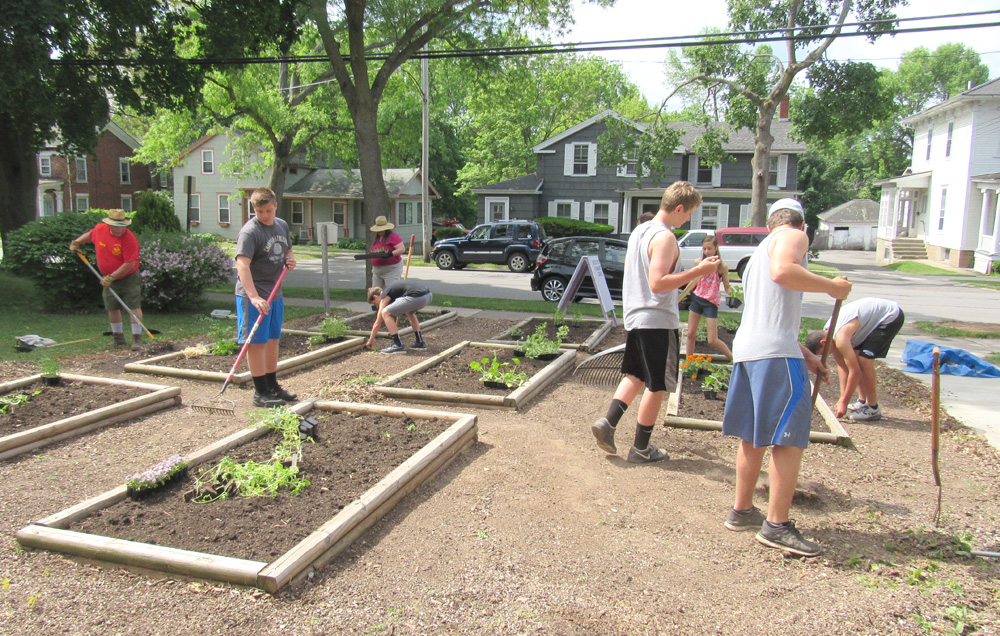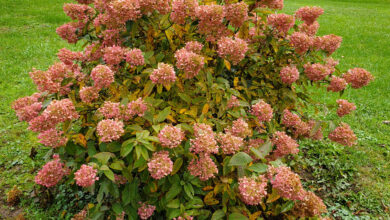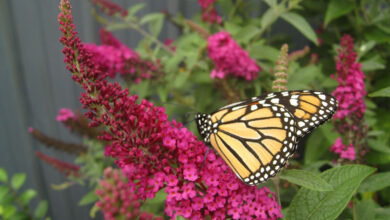Garden column … of tulips and toads …
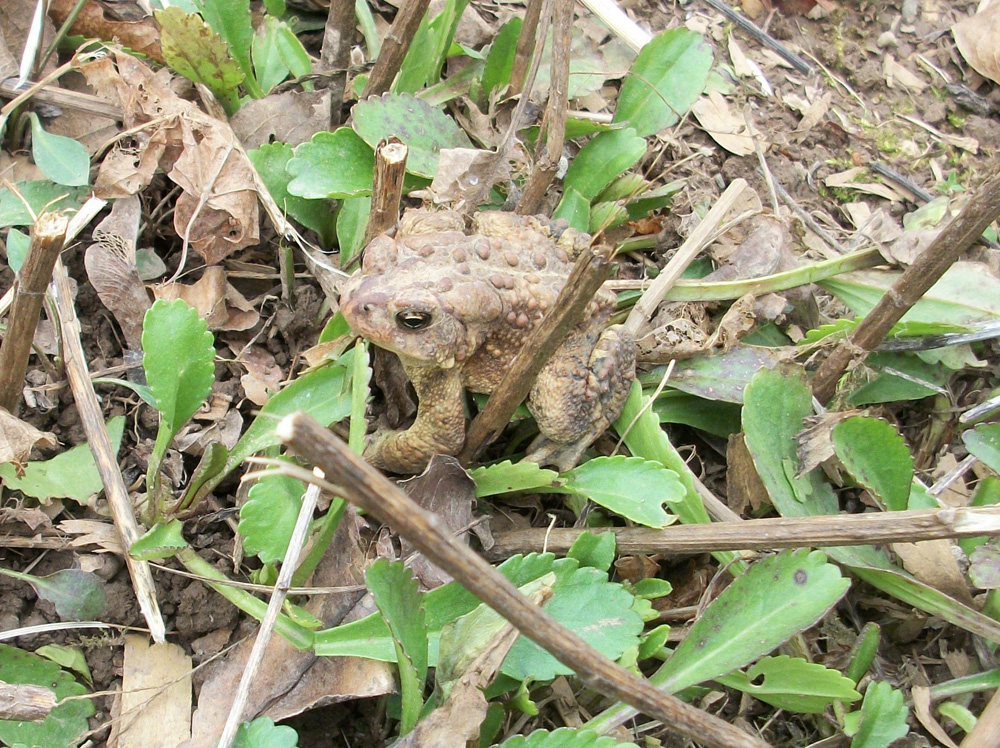
The garden is quickly becoming a much more cheerful and colorful place now that the tulips and other spring flowers are finally in bloom. My tulips are peaking as I write this column – so exciting after the build-up of anticipation over the long winter. I always plant fresh tulip bulbs in the fall as most varieties lose their vigor after a year or two. I’m never disappointed in the tulips – as long as they are not destroyed by the fanatical weather swings we can get in springtime.
This year I have a variety of tulip with double blossoms. They are spectacular and could be mistaken for peonies if it weren’t for their deep yellow color tipped with orange. I also have more “Banja Luka” tulips with their bright yellow petals streaked with red. I planted more last fall next to the 2012 planting. The older bulbs are blooming quite well, making for a flashy display.
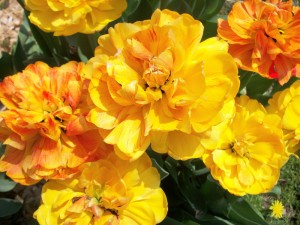
Although they peak for a short time every year, the tulips certainly are one of the easiest and most rewarding flowers to grow and it wouldn’t seem like spring in my garden without them.
Many times it seems we are “battling” with wildlife in the garden – rabbits, deer, raccoons – but I also have a growing list of garden wildlife friends. I have been happy to come across many toads this spring during my garden clean-up work. They do manage to “startle” me when I inadvertently disturb them, but they are one of the best buddies a gardener can have.
Toads gobble up thousands of garden pests during the growing season including beetles, caterpillars, flies, larvae, moths, slugs, snails, tent caterpillars and even cucumber beetles (or so I’ve read).
Toads can be distinguished from frogs by their dry, brownish, bumpy skin. They must have a cool, damp place in which to live as they don’t take in water by drinking, but rather by absorbing it through their skin. They need to sit in shallow pools of water to hydrate themselves.
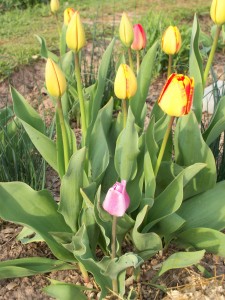
They are nocturnal and hunt for food in the cool of the evening. This is something most gardeners have probably observed during evening walks. Toads like to congregate on our small patio and our porch at night because our exterior lighting attracts many bugs (maybe I should put more lighting in the garden itself for this reason, hum….).
I’ve read that toads are long-lived, anywhere from fifteen to forty years, and that they hibernate in the ground during the winter. Toads will stay in the same habitat year after year if they have everything they need to survive.
It’s fun and easy to attract toads to your garden. They are territorial loners by nature, so you might want to set up several small “habitats” throughout your garden area.
Save those broken garden pots and turn them upside down in the garden – making sure there is an opening for a door – to create little “toad abodes.” Toad houses are also readily available at garden and home centers and from catalogs, but making your own can be a fun project, especially for children who are fascinated by these slow-moving and gentle garden creatures.
One of my favorite gardeners and garden writers, Sharon Lovejoy, in her book A Blessing of Toads, says, “Never underestimate the power of a woman or the usefulness of a toad.”
She offers many suggestions for attracting toads including turning moist, shady problem spots in your garden into toad habitats by planting native, shade-loving plants and mulching the area with leaves. Creating toad habitat is another reason to include some perennial material in your vegetable garden – it will encourage toads to set up housekeeping right where pests they love to eat can do extensive damage to your annual crops.
Shallow terra-cotta plant saucers can be placed in a shady spot and filled with fresh water to provide a place for toads to “soak.” I like to put them near my toad houses.
Small mounds of branches and twigs also provide shelter and a terra-cotta pot or hollow log on its side and partially buried in soil creates a tunnel in which toads can rest.
Dry rock walls provide an excellent environment for toads and you can place small piles of rocks around your garden to welcome new toad residents. Finally, be wary of using slug and snail bait in your garden. It is possible for toads to ingest the poison if they eat contaminated pests.
Photos by Kristina Gablaski


